Construction Observation
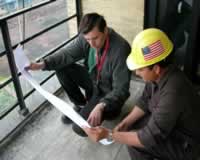
RAND administers more than 300 repair, renovation, and upgrade projects a year, totaling more than $39 million in construction costs. Our construction observation starts with a Project Initiation Conference at which RAND... meets with the building owner's representatives and the contractor to compile a submissions list, establish a project schedule with milestones, confirm crew assignments, and prepare for potential contingencies. During the construction phase, our project manager visits the site two to three times a week to determine if the methods and materials used conform to the specifications and code. After each site visit we provide a written report, including a list for addressing outstanding work items. RAND also reviews shop drawings, change orders, and payment requests, and signs off on the completed work. Our team stays on the job throughout the construction phase to keep projects on schedule and on budget.
Bid Solicitation and Analysis

Because of the amount of construction work that RAND administers (more than 500 jobs a year totaling more than $60 million in construction costs), we are able to obtain competitive quotes for our clients. For every repair or... upgrade project, RAND screens the contractors and arranges a pre-bid walkthrough with qualified firms to explain the scope of work and answer questions. After soliciting sealed bids, we provide a detailed bid spreadsheet and analysis, which includes breakdowns for unit and gross prices to accommodate the client’s budget. Based on a thorough review of the bids, RAND helps the owner select a contractor and negotiate the contract to assure favorable terms for the client.
Feasibility Studies and Plan Reviews
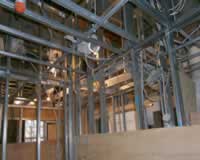
Before undertaking a major construction project, such as installing a recreational roof deck or renovating an apartment, a feasibility study or plan review is recommended to determine how the project could affect not only... the designated space but also the adjacent areas and units and the building as a whole. RAND assesses potential issues, such as how proposed alterations could impact the building's structural, mechanical, electrical, and plumbing systems, and whether the changes would conform to applicable laws, building codes, zoning resolution, and the Certificate of Occupancy. By evaluating the short- and long-term ramifications of a project and estimating the associated costs, RAND’s reports give building owners the necessary information for deciding how best to proceed.
Leakage Evaluations
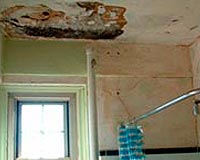
Leaks are probably the most common headache suffered by building owners, managers, and residents. Based on our extensive experience with facade, roofing, and waterproofing systems, RAND has the expertise to diagnose... the causes of water infiltration, track the sources, and design and administer repair programs. Our staff is certified in using infrared thermography to pinpoint water penetration in hard-to-detect areas, such as behind walls and under roofing membranes. In addition, to keep buildings watertight, RAND develops ongoing maintenance programs to help prevent future leaks.
Historic Preservation

Older properties with historical, architectural, and cultural significance are especially vulnerable to the ravages of time and the elements. At RAND, we approach historic preservation projects with the understanding... that it is sometimes necessary—and desirable—to incorporate modern materials and technologies to ensure the building is properly repaired and protected against deterioration. At the same time, we respect the property’s original design and construction and strive to replicate its unique appearance and style as closely as possible.
Many of our projects are in designated New York City Historic Districts, which call upon our extensive knowledge of Landmarks Preservation Commission standards and regulations. We are able to draw upon this experience and sensitivity to restore the aesthetic beauty and architectural quality of historic and landmark properties while ensuring they operate efficiently.
Benchmarking

Under New York City’s benchmarking law Local Law 84/09, owners must submit an annual analysis of their building’s energy (electricity, gas, and fuel oil or steam) and water usage to the Department of Finance by May 1... every year. Using the EPA's online Portfolio Manager tool, RAND generates a property’s custom Energy Report, which includes the building’s profile, summary information, and estimates of its energy usage, and submits it to the city to ensure compliance.
Energy Audits
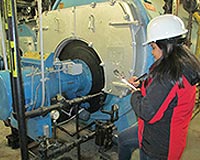
RAND performs energy audits to help property owners comply with Local Law 87/09, part of New York City’s Greener Greater Buildings Plan, which applies to properties 50,000 square feet or larger. After analyzing the building's... utilities use, RAND surveys the systems and components to identify operating and maintenance measures for better energy performance and cost savings, as well as capital improvements for further consideration. RAND’s Energy Analysis Reports detail our findings, summarize special problems or needs, and outlines a recommended scope of work for improving energy efficiency throughout the property, including estimated costs and savings.
Retro-commissioning
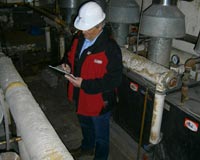
In accordance with Local Law 87/09, building owners are required to correct deficiencies in the base-building systems identified in the energy audit through a process called retro-commissioning. Retro-commissioning... includes basic maintenance and repair items such as operating protocols, calibration, and sequencing; cleaning and repair; and maintenance staff training and documentation. As retro-commissioning agent, RAND develops the retro-commissioning report, guides the owner through the diagnostic testing and performance monitoring protocols, and submits the final Energy Efficiency Report to the city to assure compliance.
Green Roofs
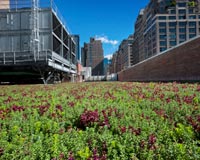
Green roofing systems provide many benefits: They add usable space and an aesthetic appearance to the roof, increasing the building’s property value. The vegetation and soil protect roofing membranes from... ultraviolet radiation, extending the life of the roof. The soil and vegetation also add an extra layer of insulation, improving heating and cooling efficiency and reducing sound transmission. In addition, green roofs absorb rain, reducing storm water runoff.
RAND evaluates the feasibility of installing a sustainable roofing system, analyzing such factors as the existing roof's construction, condition, load-bearing capacity as well as zoning restrictions and code compliance. RAND provides recommendations for the most appropriate type of green roofing system for the building and prepares the design and specifications for its installation, administering the project to completion.
Exterior Site Upgrade Studies & Design
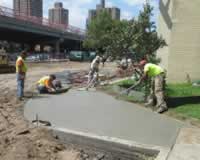
In addition to the building itself, a property’s exterior site requires regular maintenance to keep it safe, functional, and aesthetically pleasing. Cracked concrete and asphalt, shifting walls, crumbling stairs, uneven... pavement, poor drainage, broken fences, poor lighting, and dilapidated benches are not only eyesores but also safety hazards.
RAND designs and administers repair and upgrade programs for exterior site areas and landscaping components, including:
- Stairs and ramps
- Walkways and curbs
- Retaining walls
- Courtyards, plazas, and playgrounds
- Driveways and parking lots
- Fences, gates, and railings
- Planters and fountains
- Benches and seating areas
- Lighting and signage
RAND also addresses a site’s code and zoning issues, such as Americans with Disabilities Act compliance for wheelchair access and handicap parking as well as New York City Building Code requirements for egress, lighting, parking spaces, setbacks, fencing height, and other exterior items.
Code & Zoning Compliance Services
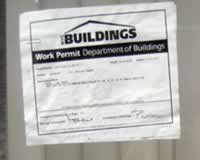
RAND’s in-house Code & Zoning Compliance Team is well versed in the complex policies, procedures, codes, and regulations governing the buildings industry. With our vast knowledge of the workings of various city and state... agencies, we are able to facilitate the often lengthy and confusing process of obtaining work permits from the New York City Department of Buildings and the Landmarks Preservation Commission. Our Code & Zoning Compliance Team also searches building records and plans, obtains new and amended Certificates of Occupancy, and helps remove building violations. By staying on top of the required paperwork, RAND helps avoid unnecessary procedural delays.
Special Inspections
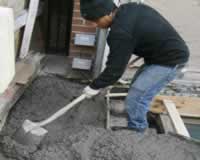
Performed at critical points during most repair and upgrade projects, Special Inspections verify that construction work has been conducted according to the project’s approved construction documents. As a New York City-registered Special Inspections Agency, RAND is authorized to perform Special Inspections for a wide range of disciplines.
Our qualified Special Inspectors provide oversight and direction for the Special Inspections Program and ensure that observations, measurements, documentation, notification of relevant parties of non-conforming items, filing of related forms, and other duties related to the Special Inspection program are conducted in accordance with DOB requirements, from filing to sign-off.
RAND’s Special Inspectors are also often the designers for the project, so they have a comprehensive understanding of the construction documents. And because our inspectors have multiple qualifications, they are able to perform inspections more efficiently by observing multiple types of work (e.g., masonry, steel, concrete) during a single inspection.
RAND also serves as Special Inspection Program Coordinator for third-party inspection agencies, soliciting proposals from qualified agencies, reviewing credentials of Special Inspectors assigned to the project, and reviewing Special Inspection Reports submitted by third-party agencies.
Tenant Protection Plans
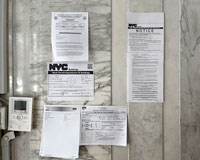
As a Registered Design Professional firm and Special Inspections Agency, RAND provides Tenant Protection Plan (TPP) and TPP Special Inspections services. We manage the preparation, filing, and inspections needed for TPP compliance. Our expertise supports property owners in navigating TPP requirements, helping them maintain compliance and prioritize the safety and comfort of tenants during construction and renovation projects.
Garage Restoration Design
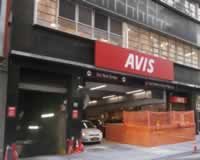
Parking garages are subjected to wear and tear from corrosive elements such as road salts, automobile exhaust, and leaks, yet they rarely receive proper maintenance. Decades of... neglect can result in deteriorating concrete and steel, requiring repairs ranging from simple re-coating to complete structural rehabilitation. RAND’s repair programs are designed to keep garages in operation during construction with minimal disruption to customers.
Ground Penetrating Radar

Ground penetrating radar (GPR, also known as surface penetrating radar) is a non-destructive evaluation tool used to assess the condition of concrete and masonry structures. With GPR, the internal composition of the structure,... such as its thickness, location of steel reinforcement, and location of grout, can be determined by scanning the surface of a wall or slab. RAND’s Structural Engineering Team is trained in GPR and uses it to examine walls and slabs in concrete and masonry structures to improve the quality of investigations while saving clients time, money, and the time and cost of invasive probes.
Infrared Thermography
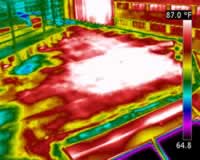
Not all building conditions are visible. Using infrared thermography as a diagnostic tool, RAND can obtain a more thorough and detailed view of a building’s conditions, enabling us to uncover problems that may not be... apparent in a visual survey alone.
RAND’s team of professionally trained Certified Thermographers can pinpoint areas of water penetration underneath roofing membranes and behind walls as well as detect heat loss caused by insufficient insulation and faulty construction. Infrared thermography also can detect blockages and other malfunctions in HVAC and plumbing systems and overheating electrical wiring and panels.
As a non-destructive testing method, infrared thermography saves time and money spent on investigative probes for locating and assessing underlying defects. In addition, when used during an energy audit, infrared thermography can identify areas of energy loss and operational inefficiency.
Drone Services

RAND’s team of licensed drone technicians conducts aerial surveys that provide a safe, fast, cost-effective, and less intrusive way to perform close-up visual evaluations of buildings....
3D Laser Scanning
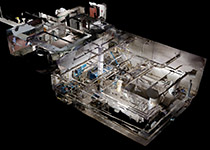
RAND’s in-house 3D Laser Scanning Team creates comprehensive three-dimensional visual representations of spaces and structures, quickly providing highly accurate visual and dimensional project information to our... architectural and engineering teams and clients during any phase of a project. The use of 3D scan visual data allows our team to survey and document existing and as-built conditions virtually, expediting site documentation and analysis, construction progress monitoring, and as-built accuracy verification. 3D scanning is non-invasive, efficient, and can capture more complete visual field data with a higher level of accuracy than traditional surveying methods.
Expert Witness Testimony

RAND’s Professional Engineers and Registered Architects work with clients and their attorneys to provide expert opinion on building-related conflicts that lead to litigation, including peer reviews and testifying in court... as an expert witness. Our expertise covers a wide range of issues, including construction defects, structural concerns, hazardous building conditions, code compliance, zoning regulations, and the scope and cost of repairs and renovations.
